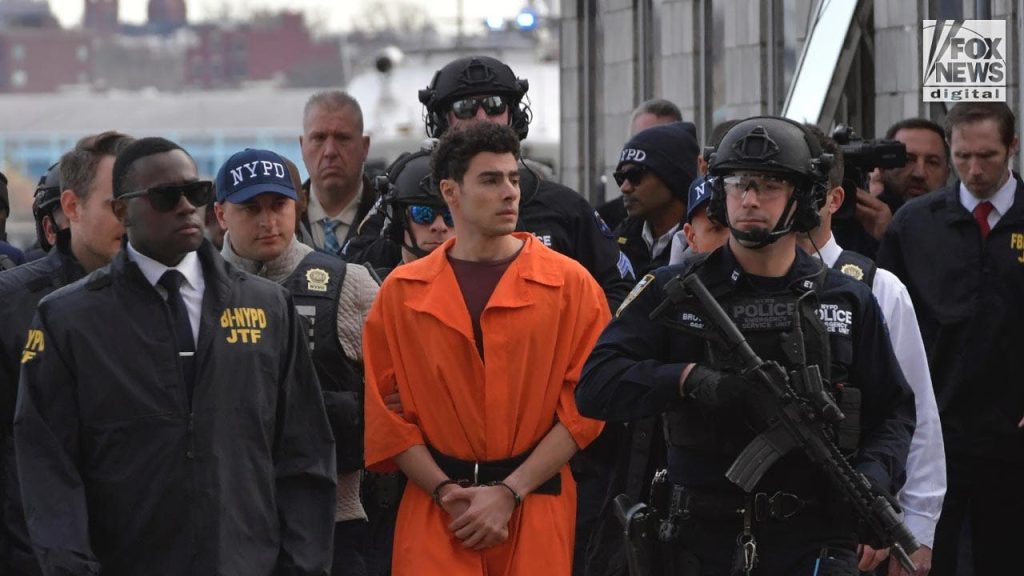The case against Luigi Mangione, the 26-year-old former computer programmer accused of assassinating UnitedHealthcare CEO Brian Thompson, continues to escalate with both state and federal authorities bringing forth an array of charges and revealing disturbing new evidence. Initially arrested and charged in Pennsylvania, Mangione has since been extradited to New York to face prosecution. The federal case against him includes charges of stalking, murder through use of a firearm, and federal firearms offenses, dramatically increasing the potential penalties he faces, including the possibility of the death penalty.
Central to the federal case is a journal allegedly kept by Mangione, detailing his meticulous planning of the assassination, his rationale for targeting Thompson, and his reflections on the act itself. Entries reportedly reveal his evolving plan, including his decision to target the insurance industry, his specific focus on UnitedHealthcare, and his meticulous research of Thompson. The journal entries, combined with evidence of surveillance and premeditation, paint a chilling picture of a calculated and deliberate act. His journal also includes a letter addressed “to the Feds,” in which he seemingly admits to the crime and boasts of his self-funded operation using social engineering and CAD skills.
The chilling details revealed in Mangione’s alleged journal provide a disturbing insight into his mindset and motivations. He describes the investor conference Thompson was attending as a “windfall” and claims that his protracted planning allowed him to “learn more about UHC,” suggesting a deliberate strategy rather than an impulsive act. He explicitly states his desire to “wack” an insurance CEO and justifies his targeting of the insurance industry as “checking every box,” although the exact meaning of this phrase remains unclear. This meticulous documentation of his thoughts and actions strengthens the prosecution’s case and provides a stark contrast to his defense attorney’s attempts to downplay the severity of the charges.
The prosecution’s case is further bolstered by a wealth of physical evidence and surveillance footage. Authorities have released images appearing to show Mangione approaching and fleeing the scene, the actual moment of the shooting, and the alleged murder weapon, including a 3D-printed suppressor. Video footage from various locations traces Mangione’s movements from his arrival in New York, his stay at a hostel under a false name, and his meticulous tracking of Thompson’s whereabouts leading up to the murder. This comprehensive timeline of events, coupled with the journal entries, presents a compelling narrative of premeditation and intent.
The federal complaint also reveals Mangione’s efforts to avoid detection, including the use of a fake ID, consistently wearing a mask except for a brief moment captured on camera at the hostel, and his rapid escape from the scene following the shooting. He utilized a combination of walking, an electric bike, and taxis to evade surveillance, ultimately discarding the bike and backpack before leaving Manhattan. The recovery of approximately $10,000 in cash during his arrest, which he denied owning, adds another layer of intrigue to the case.
The shift to federal jurisdiction brings significant implications for the prosecution of this case. With the potential for the death penalty under federal law, absent in New York state, the stakes are considerably higher for Mangione. This development has also fueled speculation about the interplay between state and federal authorities, particularly in light of the upcoming change in presidential administration and anticipated shifts within the Department of Justice. Experts suggest that the federal government may be positioning itself to take primary control of the case, potentially overriding the Manhattan District Attorney’s prosecution. The convergence of high-profile cases handled by the Manhattan DA, including the Trump hush money case and the Daniel Penny trial, further complicates the landscape and adds a political dimension to the legal proceedings.

